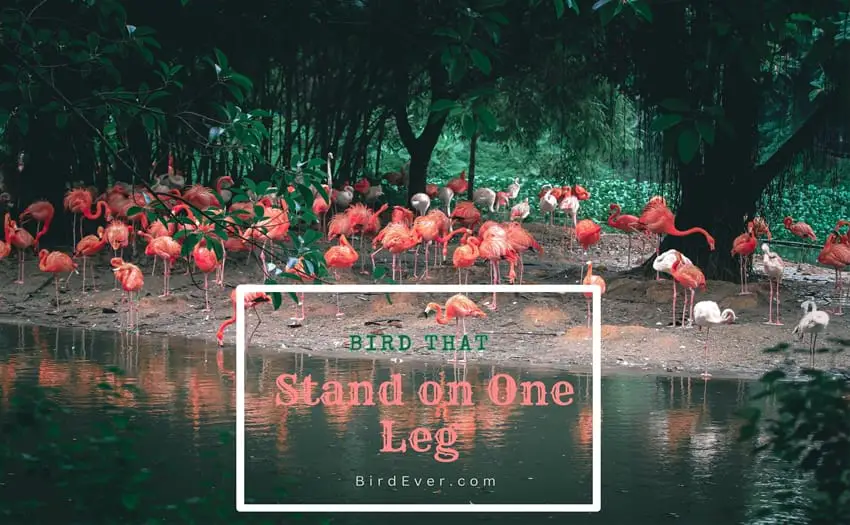Unveiling the Mystery: Bird That Stand on One Leg
Maybe you are here because you are a bird enthusiast and curious to know about the bird that stand on one leg. Isn’t it?
Bird enthusiasts and curious minds alike have long been fascinated by the behavior of birds that stand on one leg. Flamingos are birds that are known for standing on one leg. From Flamingos to Storks to Hawks, these avian creatures seem to defy gravity with their seemingly imbalanced stance.
But what is the secret behind this peculiar behavior?
In this blog post, we’ll delve into the world of birds that stand on one leg and uncover the reasons behind their unique posture. Get ready to unravel the mystery and gain a deeper understanding of these captivating creatures.
So, let’s spread our wings and explore the secret world of birds that stand on one leg!
Understanding the One-Legged Stance in Birds
Birds are known for their remarkable abilities. However, there is one particular behavior that has puzzled researchers for ages the ability of certain birds to stand on one leg for long periods.
This intriguing phenomenon has captivated scientists and bird enthusiasts alike, leading them to delve deeper into understanding the reasons behind this unique behavior.
One theory suggests that birds that stand on one leg do so as a means of conserving energy.
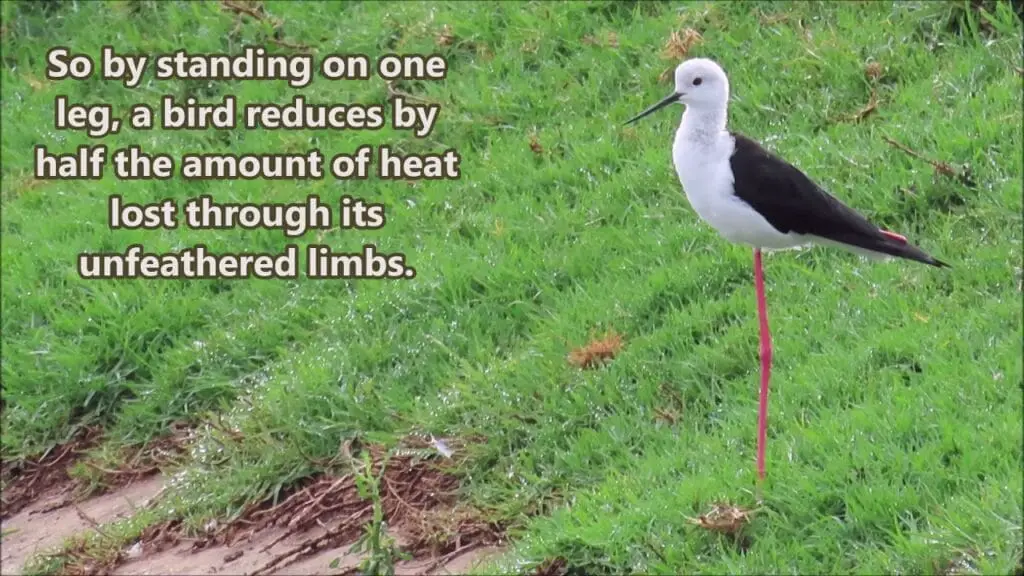
By lifting one leg off the ground, these avian creatures minimize heat loss through their feet, which is especially important in environments with extreme environmental temperatures. This adaptation allows them to stay warm in colder climates.
The Science Behind the Behavior
The science behind this behavior lies in the birds’ anatomy. Birds have tendons that lock their leg joints when they stand, eliminating the need for constant muscle exertion to maintain balance.
This energy-saving mechanism allows them to remain in a one-legged position for extended periods without tiring, even when exposed to much heat.
Another anatomical feature that contributes to this behavior is the presence of unfeather limbs, which allows for efficient heat dissipation through the legs, providing extra warmth.
Additionally, the rete Mirabelle, a network of warm arteries and veins, helps regulate body temperature and prevents heat loss through the legs.

Bird That Stand on One Leg List
Flamingos, Herons, and Canada Goose are among the many bird species that stand on one leg, some stand out for their exceptional ability to balance on a single leg for short distances.
One such species is the Flamingo, which can be found in the wild and in zoos all over the world, including in New York. Flamingos are known for their distinctive pink color and their long, elegant necks, but they are also recognized for their unique shoulder feathers that help them maintain balance while standing on one leg.
These elegant birds, Sparrows, are known for their vibrant plumage and their long, slender legs. Standing on one leg, they create a striking silhouette against the backdrop of their natural habitats.
Parakeets, on the other hand, are also known for their ability to balance on one leg, making them a popular pet bird choice for many. Another popular pet bird choice is the Parrot, known for its intelligence and ability to mimic human speech.
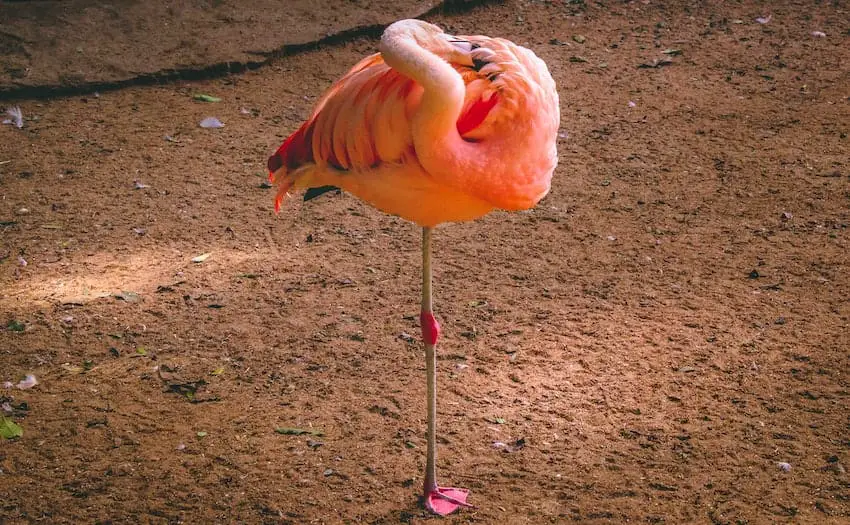
The Famous Flamingo
The famous Flamingo is perhaps the most renowned bird that stands on one leg. With their distinct pink feathers and graceful demeanor, these avian beauties captivate observers worldwide. Their ability to balance on a single leg and form a flock of flamingos showcases their unique adaptations and adds to their charm.
Flamingos are known for their exceptional agility and stability while standing on one leg, which helps them catch their prey. This behavior not only helps them conserve energy but also serves various other purposes.
Theory suggests that standing on one leg allows flamingos to cool down by minimizing the amount of heat loss through their feet.
The Majestic Heron
The majestic great blue heron is another remarkable bird that stands on one leg with a peg-legged stance. With its long, slender body and graceful movements, the heron exudes a sense of tranquility and poise. Standing tall in wetlands and marshes, this bird demonstrates its exceptional balance and control.
Other birds that share the wetlands with the great blue heron include shorebirds, such as sandpipers, which can be seen scurrying along the shoreline in search of food.
Since it remains perfectly still on one leg, just like other long-legged herons. For the heron, standing on one leg is not just about conserving energy, but also about optimizing its hunting strategy.
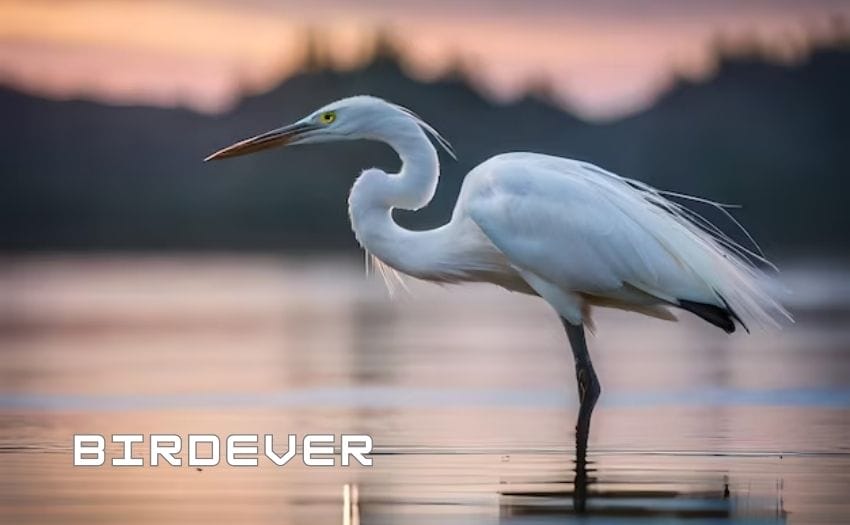
How Does Standing on One Leg Benefit Birds?
Standing on one leg provides several benefits to birds, including those studied in the field of ornithology. Primarily, it helps them conserve energy during periods of rest or inactivity.
By lifting one leg off the ground, birds reduce muscle strain and minimize heat loss through their feet, which helps them maintain their body heat and prevent the loss of body heat.
This energy-saving technique allows them to prevent muscle fatigue and maintain their body temperature without expending unnecessary effort.
Moreover, standing on one leg can serve as a defense mechanism for birds in cold weather, as it helps to conserve heat in their birds’ legs. By reducing their visibility, they become less noticeable to potential predators.
Why Don’t Birds Fall Over While Standing on One Leg?
Birds have a specialized musculoskeletal system that gives them exceptional stability and posture. Their legs are positioned toward the center of their bodies, providing a solid foundation for balance.
In addition, their tendons and ligaments are incredibly strong and flexible, allowing them to maintain equilibrium. They have excellent proprioception, which is the awareness of their body’s position in space.
This means they have a heightened sense of where their limbs are in relation to their surroundings. This enables them to make minor adjustments and corrections to maintain their balance while standing on one leg.
Furthermore, birds have a unique adaptation known as “toe-locking.” This mechanism allows the tendons in their feet to automatically tighten when they bend their legs, effectively locking their toes around the branch or surface they are perched on. This toe-locking mechanism provides additional stability and prevents them from falling over.
Also Read: What Do Cuckoo Birds Look Like?
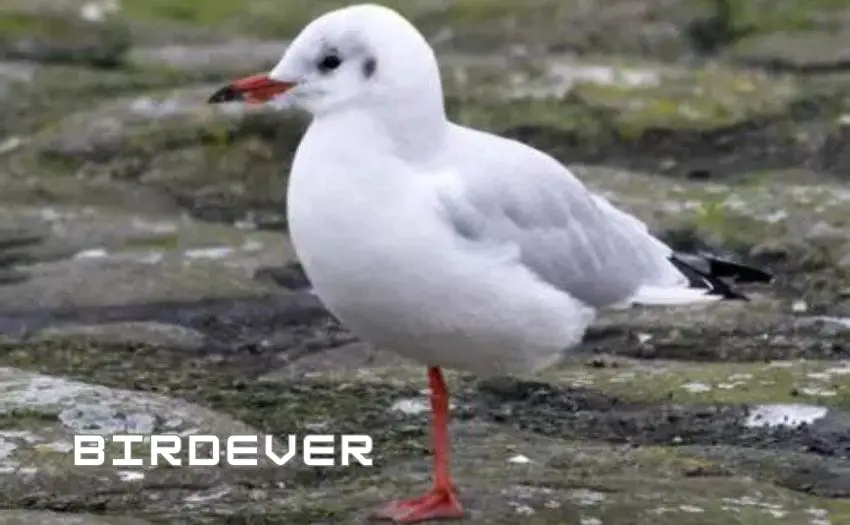
FAQs
Haven’t you quench the thirst for knowledge regarding the bird that stand on one leg? Then, keep reading the following FAQs.
Can All Birds Stand on One Leg?
While many bird species are capable of standing on one leg, not all birds exhibit this behavior. The ability to balance on a single leg depends on factors such as the bird’s anatomy, habitat, and behavioral patterns. Birds with long legs and slender bodies, like flamingos and herons, are often seen standing on one leg.
However, other birds may not rely heavily on the one-legged stance. For example, smaller bird species that live in trees or dense vegetation may find it more practical to perch or rest.
Why do birds stand on one leg?
Birds have various reasons for standing on one leg, including to conserve energy and maintain balance while perched on branches or other surfaces. By lifting one leg and tucking it close to its body, birds reduce heat loss and minimize muscle fatigue.
What’s more, some bird species may stand upright on one leg as a way to regulate body temperature in hot climates or to keep their feet warm in cold environments. Ultimately, this behavior showcases the remarkable adaptability and efficiency of these feathered creatures.
What birds stand upright?
There are several bird species that stand upright, displaying their remarkable balance and agility. Some of the notable birds that stand upright include herons, penguins, storks, cranes, and egrets. These birds have long legs and slender bodies, allowing them to maintain their upright posture with ease.
Whether they are hunting for fish in the water or gracefully perched on a branch, these birds showcase their unique ability to stand tall and proud.
Why do birds stand on one leg in summer?
Birds may stand on one leg in the summer for various reasons related to temperature regulation. In hotter climates, birds may lift one leg to reduce heat absorption from the ground, minimizing the risk of overheating.
By decreasing the surface area exposed to direct sunlight or hot surfaces, birds can stay cooler and conserve energy.
Why do some birds sleep standing on one leg?
Some birds sleep standing on one leg as a way to conserve energy and maintain balance. By tucking one leg close to their body while sleeping, birds reduce heat loss and minimize muscle fatigue. This position also helps keep their feet warm during colder nights.
Sleeping on one leg allows birds to rest comfortably while remaining alert to potential threats in their surroundings. It’s another fascinating adaptation that showcases the remarkable abilities of these feathered creatures.
Key Takeaway
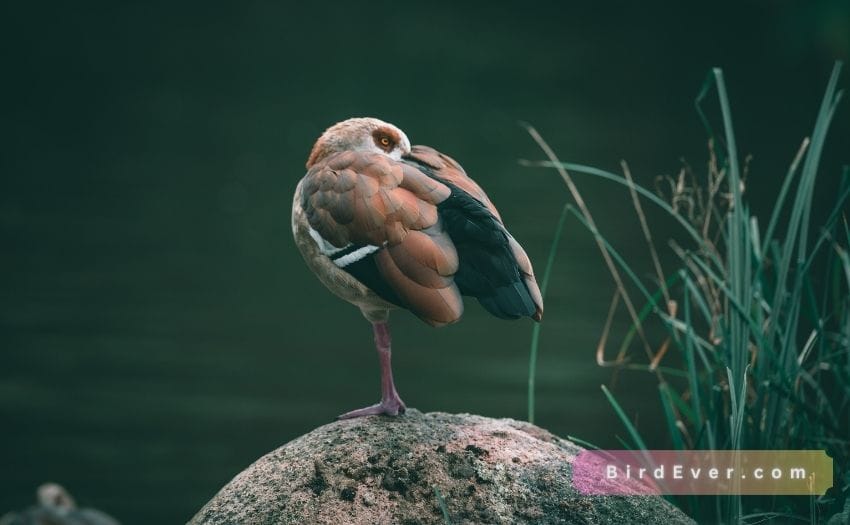
In a nutshell, the bird that stands on one leg with minimal effort is the flamingo. These elegant creatures are known for their ability to balance on one foot while conserving energy and heat.
Other birds may also stand on one leg for various reasons, showcasing the remarkable adaptability and efficiency of these feathered creatures.
Regardless, keep an eye out for these majestic birds, as they display their graceful balance in nature’s landscapes.
